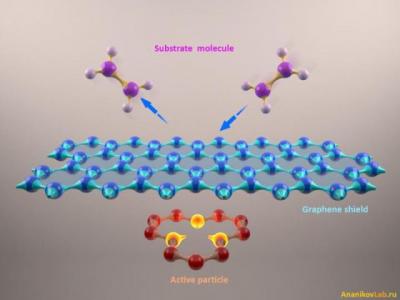A collaborative theoretical and experimental study suggested that graphene sheets efficiently shield chemical interactions. This may hold promise for applications like quality improvement of 2D materials by "de-charging" charged defect centers located on the surface of carbon materials. Another important feature is the ability to control selectivity and activity of the supported metallic catalysts on the carbon substrate.

The team studied carbon materials with surface defects - an active species, that need to be protected. The experiments showed that the defect areas were reactive and retained high activity towards various molecules. However, as soon as the defects were covered with few layers of graphene flakes, the distribution of reactive centers became uniform (without localized reactivity centers typical for defect areas). Put simply, covering surface defects with graphene layers has decreased the influence of charged defects and made them "invisible" for chemical interactions at the molecular level.